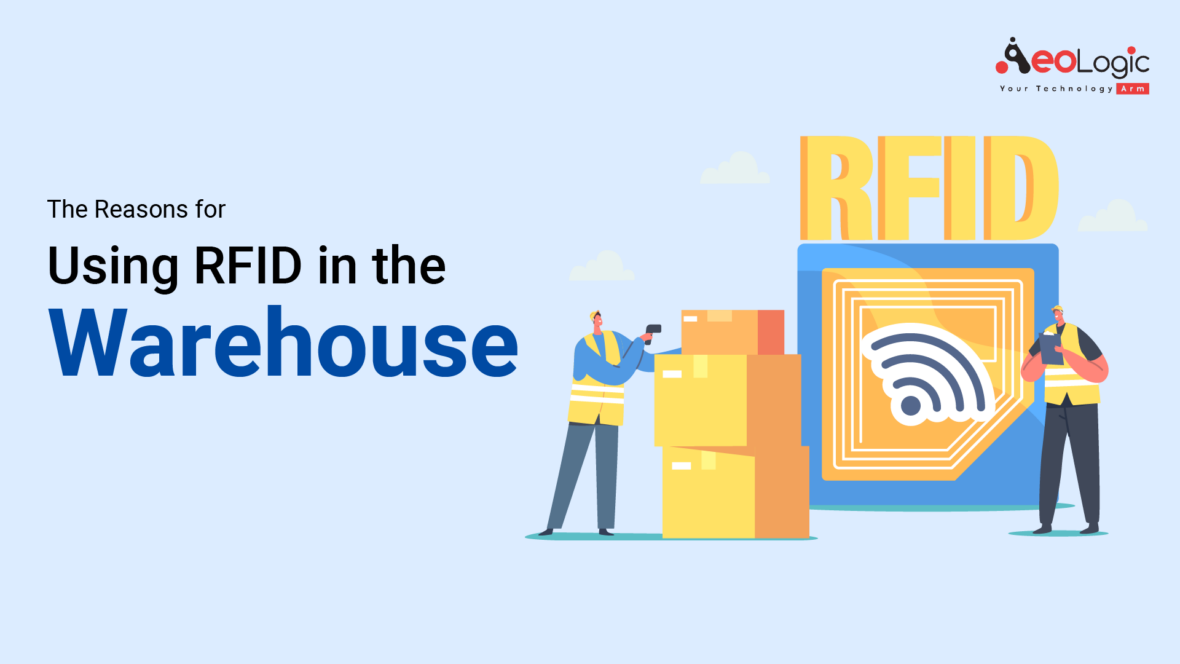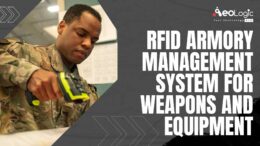Radiofrequency identification (RFID) is used to establish a one-to-one unique correspondence between the acid and RFID tags. The RFID tags transmit data to RFID readers to realize the locating and tracking of products.
Traditional automated inventory systems require a lot of hardware installations such as antennas and readers but still struggle to support item-level visibility. Implementing radio frequency identification(RFID) technology enables to respond to today’s market needs reducing manual efforts to track inventory in real-time location, automating quick search of items on shelves and floor, and complete item-level visibility. Installing significantly less hardware that would be invisible to customers’ offerings and result in increased ROI because of affordable pricing.
On the outbound side of warehousing operations, the RFID tags enable us to see the assets being moved from the warehouse to the dock door and being staged prior to being packed inside of a trailer.
The Reasons to Implement RFID In Warehousing are as Follows:
Mass Encoding
A few years ago encoding large numbers of tags on a high-speed convenience line was next to impossible. However, with the improved sensitivity of today’s alien Higgs-4 and Higgs-EC tags, hundreds of individual item tags inside a carton can be programmed instantly with a unique EPC as it moves past the reader and antenna. Even on a conveyor moving at 500 to 600 per minute or faster and the system knows the type and quantity of items that are to be within each container.
So that if a stray item is included or missing, the container can be sent off to the rejection shoot. Many apparel manufacturers have established their own serial number methodologies, so the encoding of tags quickly has become a critical piece of the retail supply chain, which is now driven by tagging at the item level.
Aggregation
Aggregation is the means by which several tags are associated with a single tag. A typical warehouse management style solution entails item-level tags getting abrogated or identified to case tags and case tags, in turn, getting aggregated to pallet tags.
When a series of tags are aggregated to a single tag, this series of tags is known as a child tag while the single tag is referred to as a parent tag. Upon reading a parent tag at any given RFID checkpoint, all of its associated child tags are deemed to have also been read at the checkpoint.
Boost your business with our RFID Solutions!
The benefit of the aggregation is that the user does not need to read every tag. At the time of large numbers of tags passes through a single checkpoint. By reading the parent tag, the user is, in essence, reading all of its child tags. At the time of doing inventory cycle counts of goods, be it with handheld scanners out with a mobile, fixed reader configuration, users don’t have to read every item-level tag to reconcile every item in a case, and you don’t have to read every case level tag to reconcile every case in a pallet.
Conclusion
To sum up, Mass encoding and Aggregation is an excellent RFID solution design approach that helps enable 100% reconciliation of goods, even if 100% read rates of all the RFID tags are not possible. Thus, your RFID hardware implementation doesn’t have to be perfect, particularly in difficult environments. (Zolpidem) This method lessens the expense of implementation while providing significant benefits over barcode-based solutions.
Are you looking to implement radio frequency identification technology into your warehouse business? If yes so please feel free to contact us at support@aeologic.com






